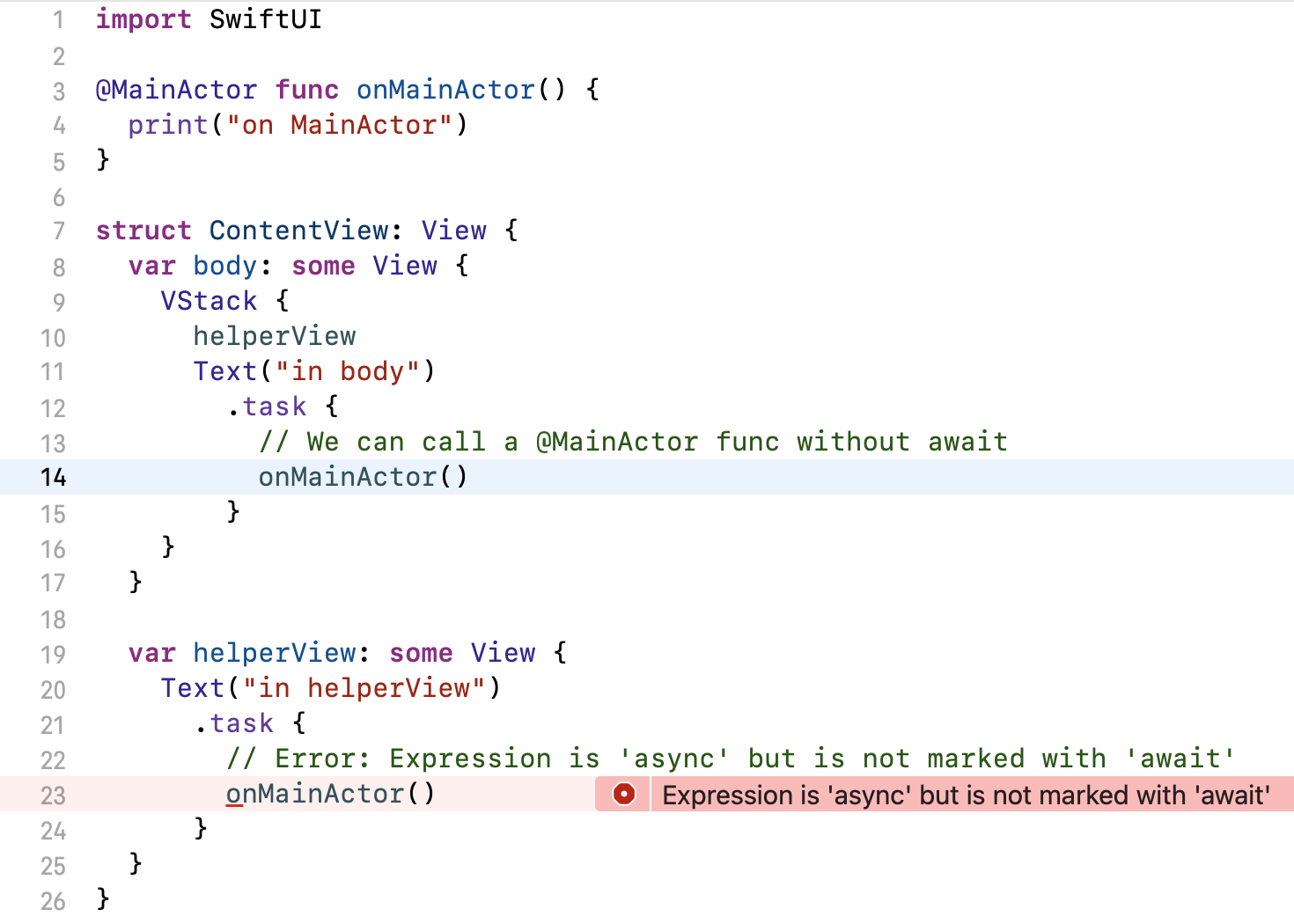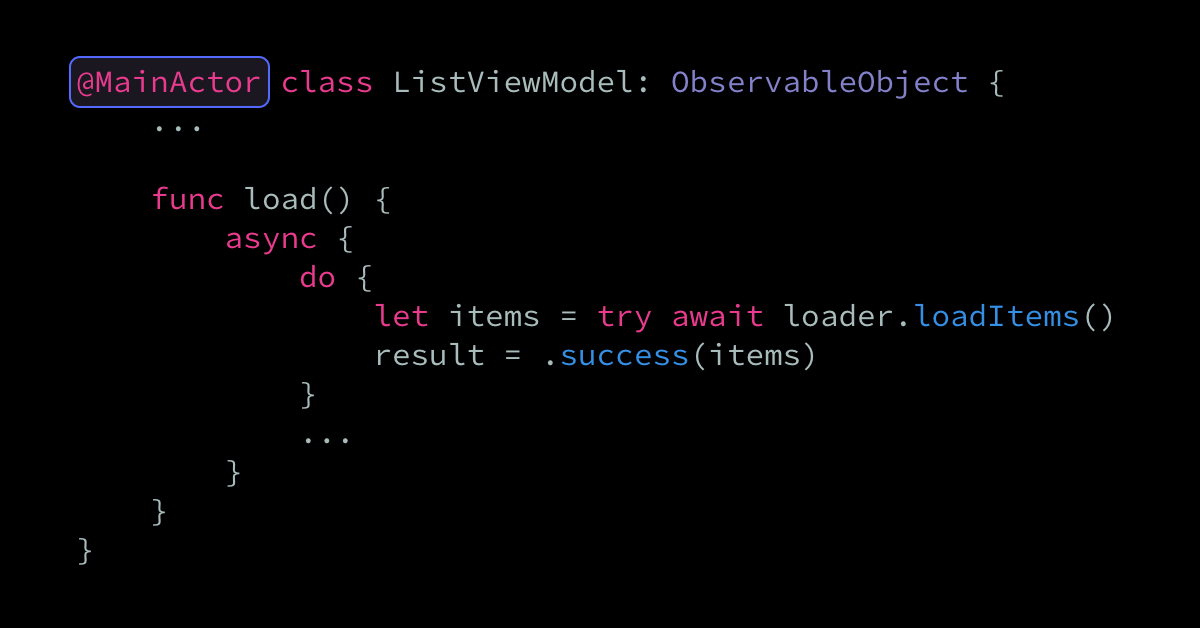You may have noticed that the Swift compiler automatically treats the closure of a DispatchQueue.main.async call as @MainActor. In other words, we can call a main-actor-isolated function in the closure: import Dispatch @MainActor func mainActorFunc() { } DispatchQueue.main.async { // The compiler lets us call this because // it knows we’re on the main actor. […]
SwiftUI’s .task modifier inherits its actor context from the surrounding function. If you call .task inside a view’s body property, the async operation will run on the main actor because View.body is (semi-secretly) annotated with @MainActor. However, if you call .task from a helper property or function that isn’t @MainActor-annotated, the async operation will run […]
@MainActor is a Swift annotation to coerce a function to always run on the main thread and to enable the compiler to verify this. How does this work? In this article, I’m going to reimplement @MainActor in a slightly simplified form for illustration purposes, mainly to show how little “magic” there is to it. The […]
One challenge when it comes to concurrency on Apple’s platforms is that an app’s UI can, for the most part, only be updated on the main thread. So, whenever we’re performing any kind of work on a background thread (either directly or indirectly), then we always have to make sure to jump back to the […]

